Kirschenbubele
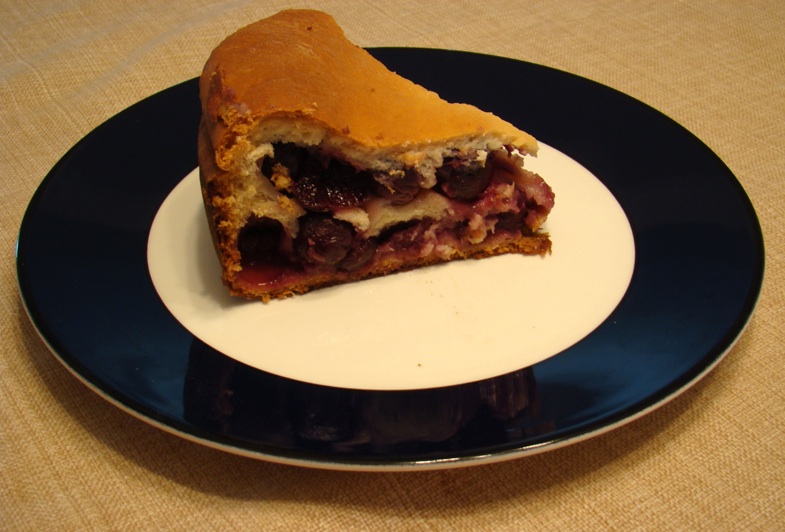

Kirschenbubele is a German sweet cherry bread that I make during the few weeks in the summer when cherries are in full season. This bread doesn't seem to be commonly known; while a number of German friends and acquantances have recognized the related family recipe of Zwetschgenplätz, though usually under another name, none of them have recognized this concoction. The closest was a friend who showed me a recipe for Kirschenmichel, which is made with sour cherries instead of sweet and is closer to bread pudding. I tried a web search and found only one page online which appeared to be a German woman's posts about her diet. (Not surprisingly, the Kirschenbubele was listed as a non-dietetic treat.)
If you are familiar with this dessert, please contact me and share what you know about it. I'd love to hear about other versions and histories of the recipe. Unlike the Zwetschgenplätz, Oma never made this for me, so I learned the recipe from my mother when she decided to make sure Oma's recipes were passed on, and I've modified it based on what works for me. For instance, Mom says that Oma used three layers of cherries instead of two, but I can't get a bread that thick cooked properly in the center without burning the outside. (This is why my Kirschenbubelen don't use a full batch of the yeast dough.)
The most unusual thing about this recipe is that it uses whole, sweet cherries with the pits still in them. This is a peasant recipe, and when you eat the bread, you spit out the pits as you go. You are, of course, free to make this with pitted cherries, but I would not, because
Kirschenbubule freezes well. I'll often slice some up, wrap it tight, and freeze it for when I need a special treat to cheer me up when the summer fruits are gone. Or I'll freeze one of the miniature ones whole to save for company or for when I need a big treat. It is fantastic for breakfast.
For a large Kirschenbubele, you will need a Dutch oven or some other oven-safe pot with relatively thick sides at least three inches deep that will retain some heat. The pot I use is 9 inches across. I also make smaller Kirschenbubelen in large ceramic ramekins that are about 4 1/2 inches across inside; the smaller size is great for giving to friends. You will need a rolling pin, and I strongly recommend using a kitchen thermometer to test for doneness, which is hard to judge by sight.
If you only make a 9-inch Kirschenbubele, you will have yeast dough left over. There are various ways you can use up the extra dough. For instance, although Italian plums are not in the same season as cherries, you can make Zwetschgenplätz with tart apples instead of plums. The dough also makes a nice base for a yeasted coffee cake or a braided loaf of sweet bread, or it can be frozen after kneading and before it rises to be thawed and used later.
One batch of Sweet Yeast Dough will make one 9-inch bread and two 4 1/2-inch breads, or six 4 1/2-inch breads. The larger bread takes 2/3 of a batch, which is 24-27 ounces of dough, and the smaller breads take 6-7 ounces. The amount of dough and cherries needed is proportional to the area of the cooking vessel, so if you want to try a different sized pot or ramekin, you can adjust quantities appropriately. Or you can just play it by ear, making things look more or less like the pictures below.
A 9-inch bread takes about 2 pounds of cherries, and a 4 1/2-inch bread takes about 1/2 pound. It's always good to have a little extra, so when I'm using a full batch of dough I buy 3 1/2 to 4 pounds of cherries and eat whatever I don't use.
| Ingredients | |
| Sweet Yeast Dough | sugar |
| unpitted sweet red cherries, stems removed (see notes above for quantity) | cinnamon |
| butter or shortening | |
Divide the dough for each bread (see the notes above the ingredient list) into three pieces for the three layers of dough. I usually make the middle piece a teeny bit smaller, since it doesn't wrap around a layer of cherries (see the photos below). Roll each piece into a tight ball and place it on a floured surface. Cover the dough lightly with a dishtowel or plastic wrap and let it rest for 10 to 15 minutes.
Grease your pot(s) thoroughly with butter. (You do not want to get to the end and have your bread stick!)
Roll out the first piece of dough into a thin disk a little bigger than the bottom of the pot. This will feel just like rolling out pizza dough. Fit the dough into the bottom of the pot, stretching it a bit as needed, so that it covers the bottom and comes up the sides just enough to accommodate one layer of cherries.
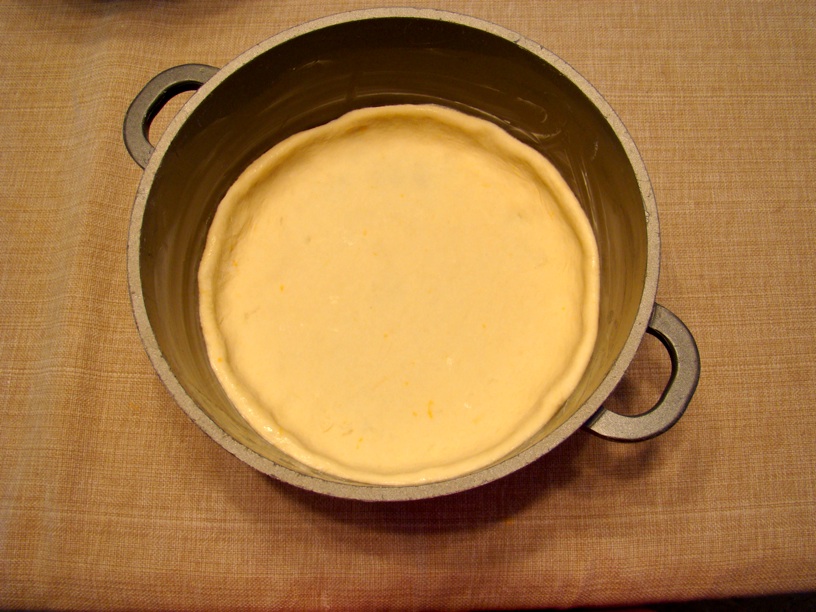 |
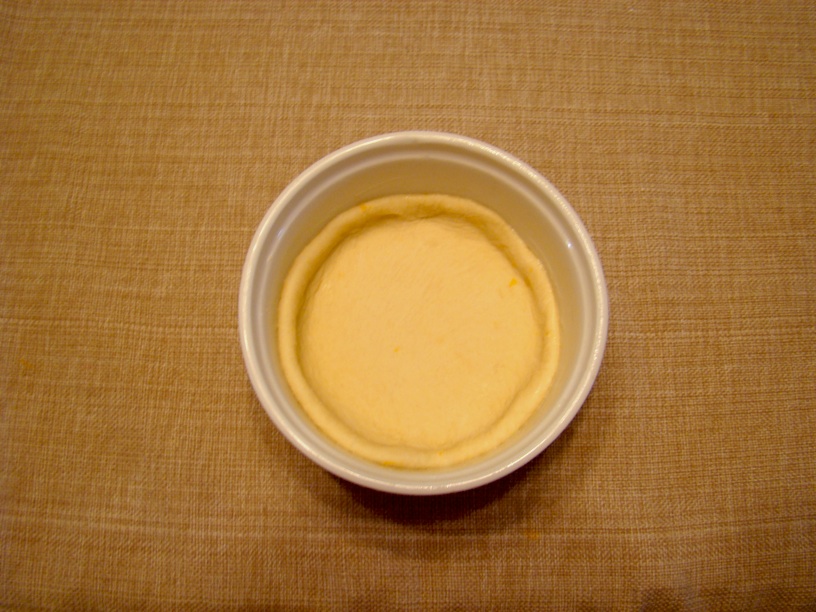 |
Place a single layer of cherries on the dough, packing them in tightly. Sprinkle the cherries with sugar so that the sugar goes about 2/3 of the way up the cherries, avoiding the outside edge of the pot. I use 2 or 3 tablespoons on a big bread, or a generous 1/2 tablespoon on a small one. This might seem like a lot, but the end result is not overly sweet. Sprinkle cinnamon over the top. (I would guess I use a teaspoon or two on a large bread, but to be honest I just sprinkle cinnamon from the shaker top on the spice jar until it looks good to me.)
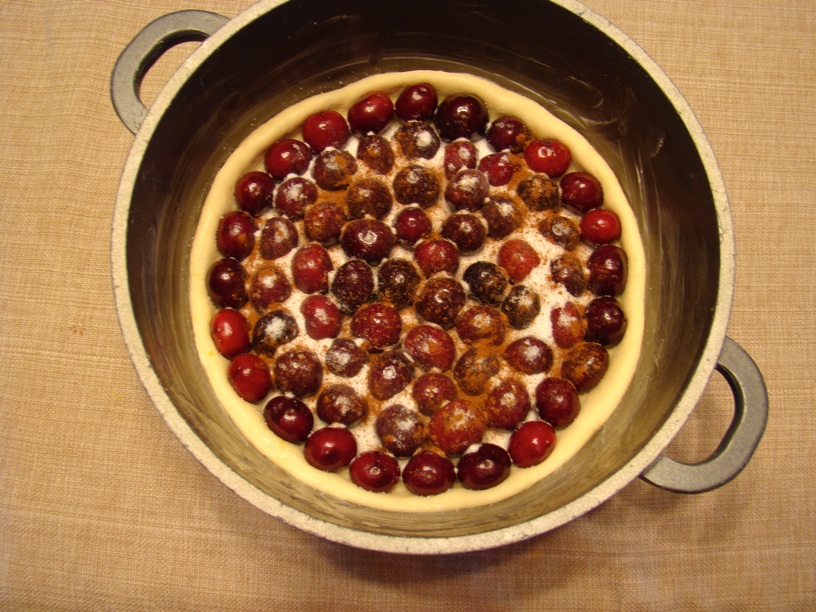 |
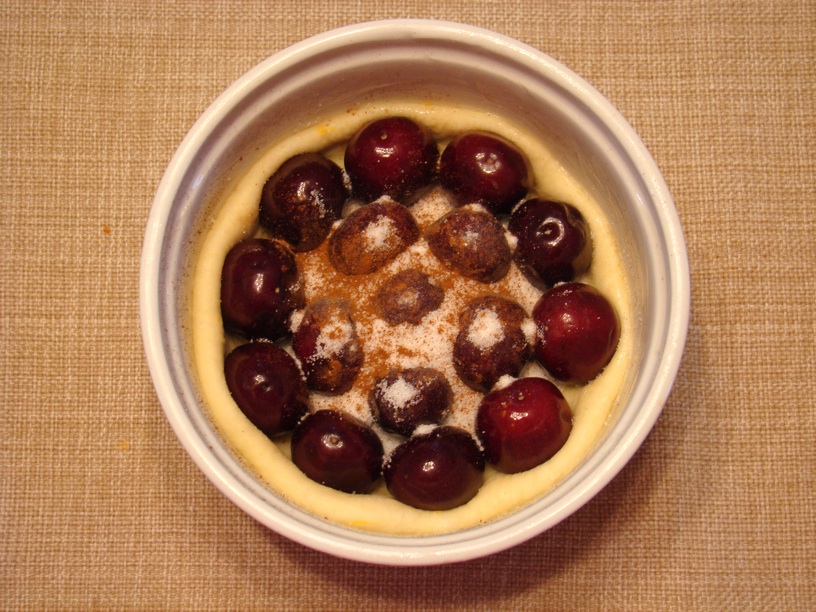 |
Roll out the second piece of dough and place it over the cherries. Press the two layers of dough together at the edges to help seal the cherries in. When the Kirchenbubele bakes, the sugar causes the cherries to release a lot of juice, which soaks into the dough, and you want to keep as much of the juice in as possible.

Place a second layer of cherries on top of the dough, keeping a little space around the outside so that the top layer of dough can wrap around the cherries. Again, sprinkle the cherries with sugar and cinnamon.
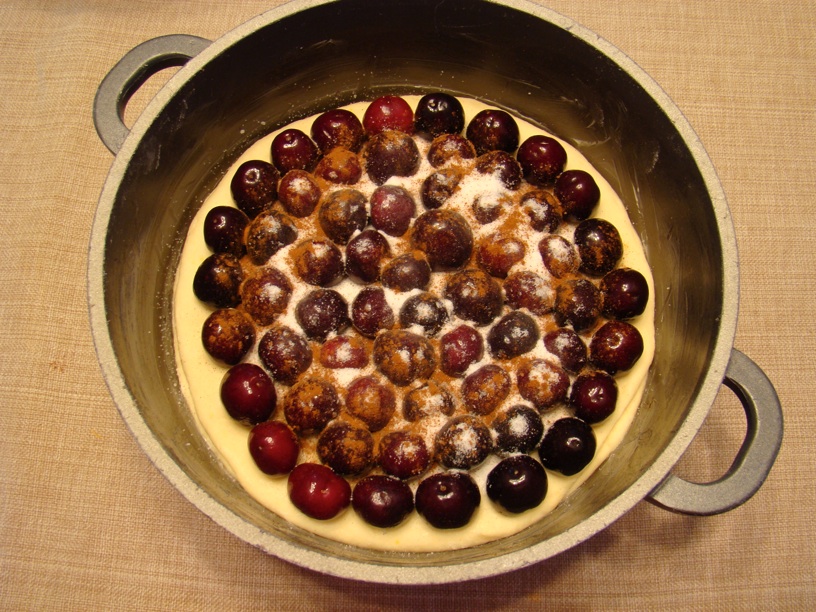 |
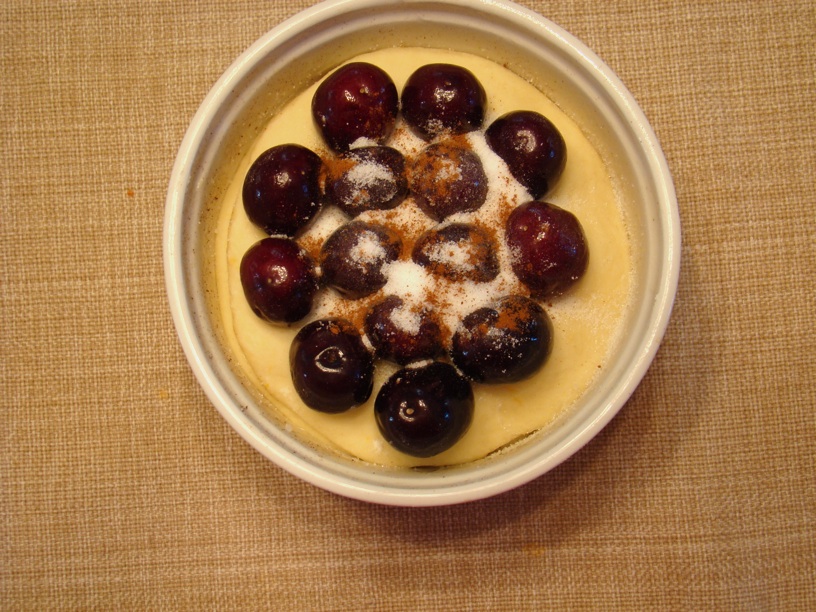 |
Roll out the third piece of dough and place it over the top of the cherries. Push the dough down the outside and press it onto the middle layer to seal the top layer of cherries. If you are making multiple Kirschenbubelen, repeat the assembly process for each one.
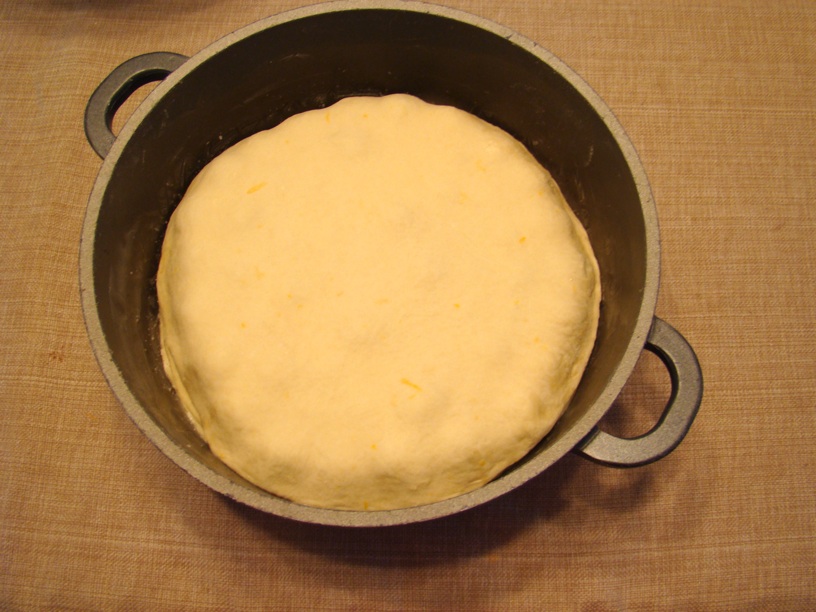 |
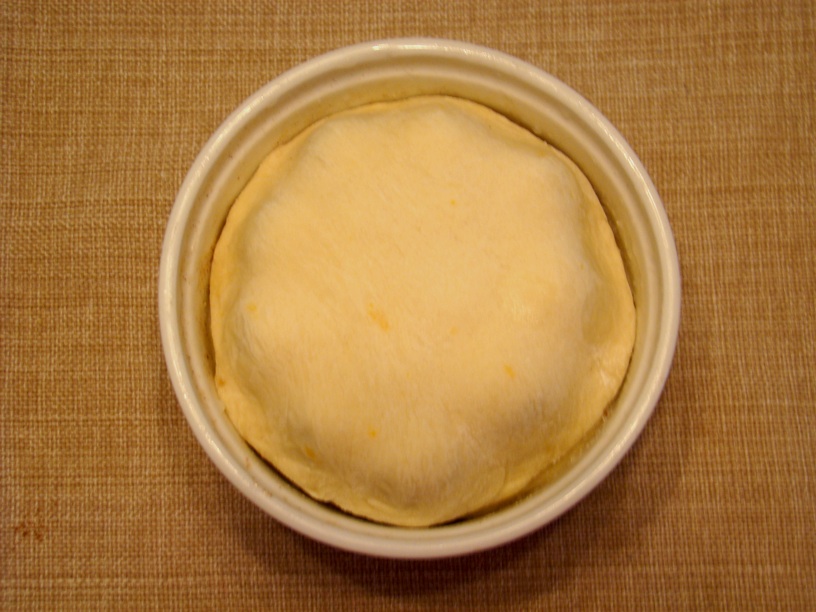 |
Cover your bread with a dishtowel or plastic wrap and let it rise for 30 to 45 minutes. While the bread rises, preheat the oven to 350°F.
Before you put the bread into the oven, poke a hole (or several holes) in the top layer of each one with a skewer or toothpick. This will help release steam and make it easier to check the internal temperature. If you are baking smaller breads in ramekins or using a relatively shallow pot, put a baking sheet underneath to catch any juice that spills out the sides.
The baking time should be between 50 and 65 minutes, but you want to start checking around 40 to 45 minutes in. The top will be a deep golden brown. If you find that the top is fully browned before the bread is done, cover the pot(s) loosely with foil to keep the top from burning.
When the bread looks like it might be done, take the internal temperate by sticking your thermometer into a steam hole and aiming for the center of the bread. Remove the bread when the outside is browned and the temperature in the middle is at least 180°F.
Let the bread cool a bit before you remove it from the pot. When you're ready (there's no rush), invert the pot over a plate and remove the bread. You may need to loosen the sides with a table knife and/or whack the bottom of the pot to coax the bread out. Smaller Kirschenbubulen cooked in ramekins will poke out over the top, so you can also try gently twisting the bread to help loosen it. Some of the cherry juice might have leaked out and made the sides of the bread sticky, which is fine.
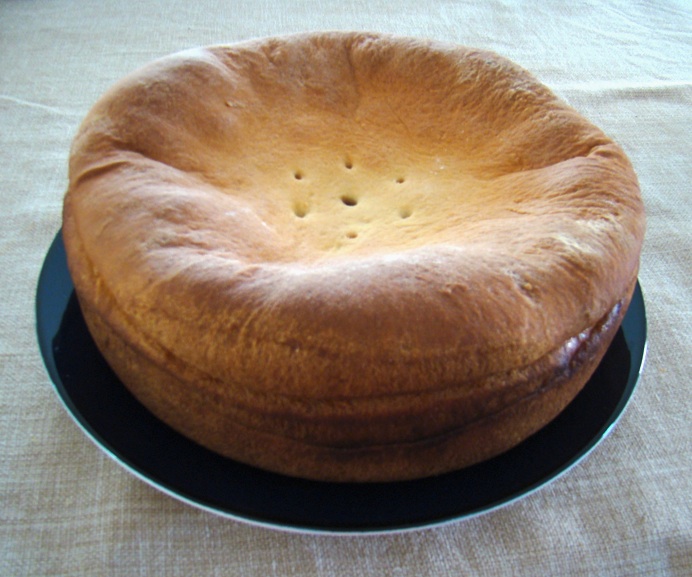 |
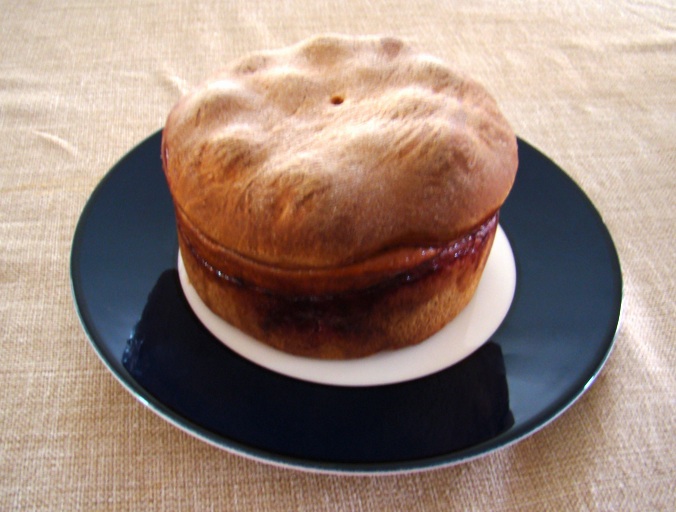 |
Wait until the bread is completely cool before eating it. In fact, it's better if you can wait until the next day, because that gives the cherry juice time to soak into the yeast dough and make everything moist and yummy.
As the Kirschenbubele cools and sits, the cherries release a lot of steam and moisture, and the outside of the bread can get damp. I like to put mine on paper towels to keep the bottom dry, and if possible I let them cool uncovered so the moisture can dissipate. When this isn't possible (for instance, because of ant or mouse problems), laying another paper towel over the bread to soak up moisture helps.
If you're going to take more than a few days to eat your Kirchenbubele, you probably want to put it in the refrigerator to make sure the cherries don't grow mold. In my house, it never lasts that long. (In fairness, this is partly because I give most of it away and freeze some of the rest.)